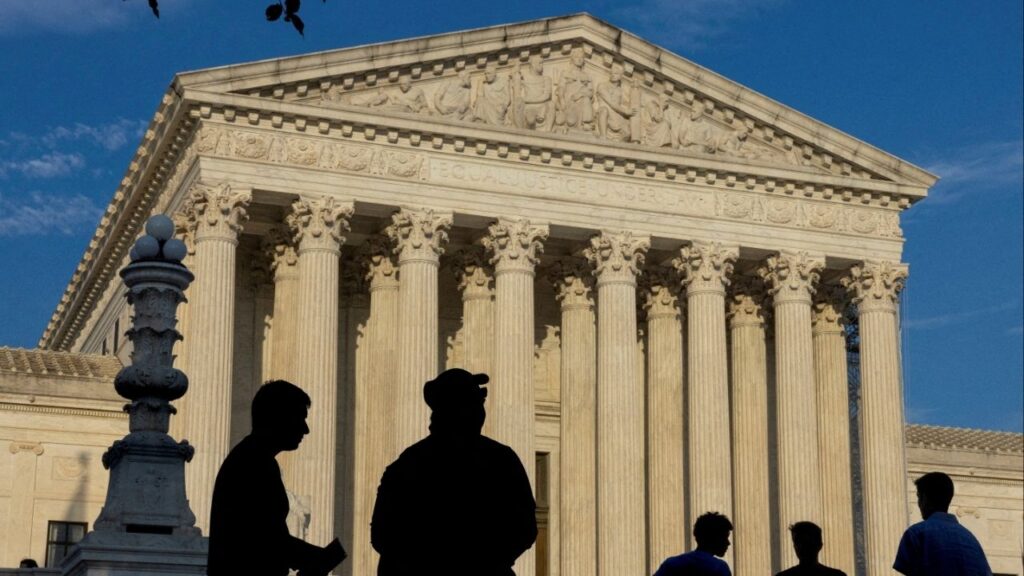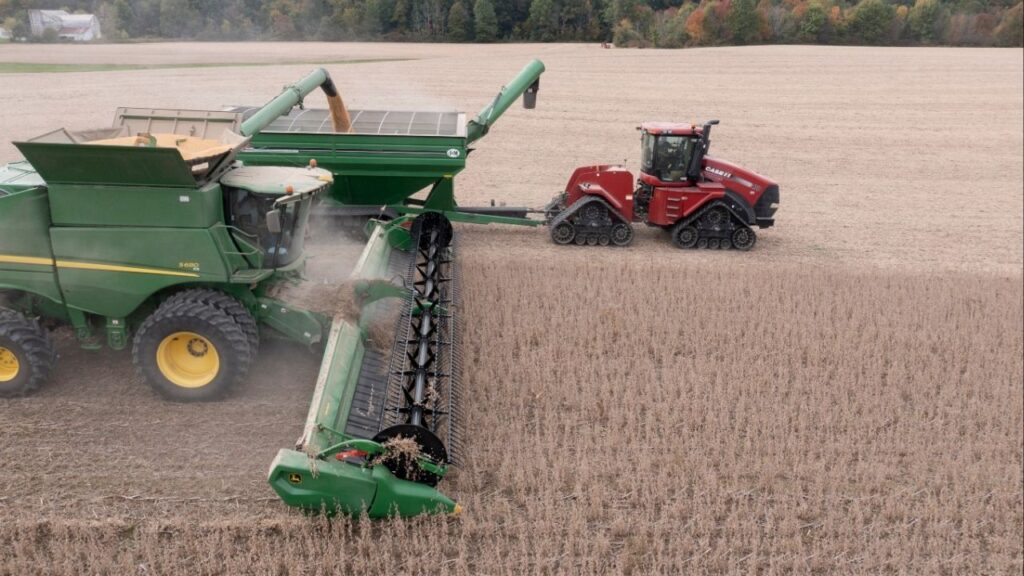Share
If it seems that wildfires are burning nearly all the time these days, that there’s no longer a definable fire season in California, you’re right. Fourteen of the 20 most destructive fires in state history have occurred since 2007, and California has 78 more annual “fire days” now than it had 50 years ago.


Analysis
Julie Cart & Judy Lin
CALmatters
The state has spent, conservatively, more than $4.7 billion from its emergency fund in the last 10 years to fight fires. Cal Fire, the state’s firefighting agency, has been chewing through its firefighting budget only months into a year, leaving little to pay for thinning California’s overgrown forests and helping rural communities protect their infrastructure and water supplies.
California’s fires are disruptive long after they are put out, displacing homeowners and even entire communities for months or years. Even as the charred wood decays, it produces emissions that set back the state’s efforts to combat climate change—only worsening the wildfires to come.
—Graphics assistance by Elizabeth Castillo
Chapter 1: More Destructive and Deadly
A Changing Climate
A warming climate complicates everything. Hotter and drier seasons mean that big fires in December, once almost unheard of, are now common.
In earlier decades, fires late in the year might have sputtered out after hitting hillsides wet with winter rain. More recent blazes feasted on vegetation that has been sucked of moisture by persistent drought.
Even years of plentiful rain harbor dangers. Post-fire precipitation, especially very wet winters, can usher in the growth of non-native shrubs and grasses that burn quickly and spread fires faster than native species.
More Homes at Risk
California’s bigger, more frequent fires are endangering more residents—nearly 90 perished in the 2018 blaze that destroyed the Northern California town of Paradise. Forest fires are increasingly a misnomer as flames race across landscapes dotted with subdivisions and communities that have been carved out where trees once stood.
The trend of more Californians living in harm’s way complicates firefighting efforts and ramps up the danger fires pose.
Epidemic of Dead Trees
California’s forests, which cover a third of the state, are now choked with some 150 million dead trees.
Weakened by a prolonged drought, which scientists link to climate change, California’s ubiquitous pines and oaks are vulnerable to insect infestation and disease. Those giants crash to the forest floor and, unless they are removed, provide ready fodder for the next voracious fire. The die-off is catastrophic, beyond the reach of state foresters to remedy.
In many communities of the central and southern Sierra Nevadamountain range, “80 percent of trees are dead,” said Ken Pimlott, former director of Cal Fire.
Fire-Prone Federal Forests
The state owns only about 3 percent of California’s wooded acreage. Some land is owned by cities, counties, Native American tribes and private holders. President Trump has criticized California’s fire management.
The U.S. Forest Service has a longtime policy of putting out every fire, and quickly, which has packed the federal land with fuel to burn. And its budget falls short of the cost of needed work to reduce that fuel.
The Electricity Factor
Hundreds of thousands of miles of transmission lines and other electrical equipment are strung across California, drawing little attention—until authorities name utility equipment as the cause of a wildfire. One in 10 California wildfires is related to energy equipment, according to the state’s chief utility regulator.
Lawmakers have ordered that utility companies put safety measuresin place, hoping to ensure that their equipment won’t spark future fires. Among the firms’ strategies: more aggressively clearing brush and trees around transmission lines; swapping wooden power poles for metal ones; and maintaining a network of remote cameras to keep watch on wind, smoke and other dangers.
None of these or other fire-mitigation efforts will come cheaply. When a judge proposed sweeping new safety measures for Pacific Gas & Electric, the company said the work could cost an eye-popping $150 billion. And consumers can be expected to foot much of the fire-mitigation bill as utility companies pass costs along to them.
Chapter 2: Harming California’s Environment
Floating Umbrellas of Horrid Air
When fires burn in uninhabited wildlands, their corrosive effects can be carried hundreds of miles by the wind, causing stinging eyes, burning throats and severe coughing.
Local air districts issue warnings to residents to wear masks and avoid outside exercise. Hospital emergency rooms report increased numbers of patients seeking help for respiratory problems, and school closures can keep as many as a million children home as even indoor air quality deteriorates.
Undercutting Climate Goals
No state has done as much as California to reduce its output of planet-warming greenhouse gases. Yet the smoke produced by major fires is so potent that a single weeks-long blaze can undo a year’s worth of carbon-reduction efforts. State officials are concerned that what’s pumped into the air during fires could impair California’s ability to reach its stringent greenhouse-gas reduction goals.
A single wildfire can spew more pollutants into the air than millionsof cars. Moreover, as more trees die, another weapon to combat climate change is lost: the prodigious ability of healthy trees to absorb carbon from the atmosphere. That process is reversed if the trees burn.
The Lingering Villain: Black Carbon
Trees release a powerful pollutant, black carbon, as they burn. Black carbon is many thousand times more damaging than greenhouse gases. And the damage doesn’t cease once flames are snuffed out; decaying forests continue to emit harmful pollutants.
If a burned-out forest is replaced by chaparral or brush, that landscape loses more than 90 percent of its capacity to take in and retain carbon.
Erosion Danger
When fires rage in California’s mountains, the system that stores and cleans water, feeds streams and rivers, supports fish and other wildlife and literally holds the hillsides together burns up.
Forests are watersheds, a critical component of California’s water supply.
- Trees hold water in their limbs, roots and soil and draw it into underground aquifers, a source of drinking water.
- Meadows on lower slopes filter and clean water.
- Tree loss after fires fosters soil erosion; the runoff clogs waterways.
- Unstable hills can threaten public safety with landslides and mudslides.
Regrowth Is Not All Good
It has to be said that fires are not always bad. Naturally occurring fires clear overgrown forests, creating space for some plants and trees to revitalize. Researchers say less-dense forests are more natural and healthy.
But more often in California, wildfires ignite a furious competition for life. Fast-growing and opportunistic non-native plants rush in after fires, with the potential to wholly supplant native species. This phenomenon doesn’t just erase an aspect of California’s botanical history; it affects its fire future. Invasive grasses and weeds often burn more readily, fanning hotter and more frequent fires.
Chapter 3: The Cost to California
LIVES LOST
Wildfires took scores of lives in California in 2018, the deadliest fire year in the state’s recent history. Most of those deaths were related to the blaze that destroyed the Northern California town of Paradise. The numbers include people responding to the fires.
Toll on State Finances
Not surprisingly, the wildfire tab is growing.
The state has exceeded projected fire suppression costs in seven of the last 10 years. In 2018, California spent nearly $1 billion on fire suppression and emergency response, far exceeding the budgeted $450 million.
Cal Fire boasts one of the largest, if not the largest, firefighting air fleets in the world, including S-2T air tankers and Huey helicopters. The state will start upgrading the Hueys to Black Hawks and begin to add C-130 Hercules cargo planes.
And rather than waiting to respond to a wildfire, emergency personnel have shifted to pre-positioning strike teams before a fire even starts. It’s a strategy that costs more.
Financial Toll for Private Citizens
Seven of the 10 most destructive wildfires in California have occurred in the last five years. The financial toll for homeowners, renters and businesses in the past two fire seasons has topped $10 billion in insured losses each year.
The California Department of Insurance has reported claims from major wildfire seasons going back to 2007. The claims include damages reported to residential and commercial properties as well as auto and other lines of insurance.
Of course, the figures don’t tell the whole story. We know many wildfire victims lived in high-threat areas without insurance.
Rising Insurance Rates and Canceled Policies
Insurance in fire-prone areas is getting more expensive.
The RAND Corp. found the average premium for high-risk areas was up 15 percent between 2007 and 2014 in reviewing prices in a portion of San Bernardino County. It was up 12 percent in the same period in the Sierra Foothills east of Sacramento.
The Santa Monica-based nonprofit research firm conducted the study as part of California’s Fourth Climate Change Assessment and was funded by the California Natural Resources Agency.
RAND researcher Lloyd Dixon found the higher prices were influencing purchasing patterns: Policyholders are buying less coverage, lowballing the cost to fully replace their belongings and tending to elect higher deductibles.
But are insurers cancelling policies? This is harder to say.
A December 2017 survey by the California Department of Insurancefound an uptick in renewal complaints in areas designated by Cal Fire as having the greatest risk of wildfire. The department received 41 complaints in 2010 but 143 in 2016. And the insurance department found that insurer-initiated cancellations went up from 8,796 in 2015 in high fire areas to 10,151 in 2016.
However, those figures are a fraction of the more than 36,000 cancellations initiated by policyholders. In fact, RAND’s study found more insurers are actually offering in high-risk areas.
At the same time, insurance policies of last resort written for brush and wildfire areas have increased from 22,397 policies to 33,898 policies, a 51 percent increase over five years.
This suggests people are more likely to be priced out and taking on more risk. Property owners in fire-threat areas can expect insurance prices to keep rising. In areas with the highest risk, people can expect their premiums by 2055 to go up 18 percent.
The Utilities Debate
Pacific Gas and Electric Company filed for Chapter 11 reorganization in U.S. Bankruptcy Court on Jan. 29, 2019 in the aftermath of the 2017 and 2018 wildfire seasons, the two most destructive in state history.
The utility, which provides natural gas and electricity to 16 million people in northern and central California, cited up to $30 billion in liabilities since many blazes have been linked to its equipment. Legal experts say it could take two to three years to rehabilitate PG&E, a process that could leave energy goals hampered and wildfire victims shortchanged.
But even before PG&E’s bankruptcy, there was debate about who bears the costs as wildfires become more frequent and destructive.
Chapter 4: The Debate Over Solutions
Detection and Prevention
California’s wildfire season is essentially year-round now. And with wildfires expected to get worse, residents, utilities and the state play a role in minimizing the impact of the wildfire seasons.
Residents
Residents have a responsibility to create a defensible space around their property and “harden” homes to make them fire resistant.
California law requires creating a buffer by clearing out trees, brush and grass within 100 feet around homes in wildfire-affected areas. Fire officials say it can increase the likelihood of a house surviving a wildfire eight-fold. In addition, homes with wood or shingle roofs are at high risk of being destroyed. Consider materials such as composition, metal or tile.
Utilities
Under new law, investor-owned utilities must prepare wildfire mitigation plans that describe what they are doing to prevent, combat and respond to wildfires. The three largest utilities, Pacific Gas & Electric, Southern California Edison, San Diego Gas & Electric, all plan to spend millions clearing brush and trees away from transmission lines, insulate or underground power lines, install or maintain a network of remote cameras and weather stations to detect wind, smoke and other dangers.
PG&E and SCE are now following in the footsteps of SDG&E in expanding the use of public safety power shutoffs, also known as de-energization. The practice of shutting off electric power during dangerous weather conditions is viewed as a public-safety measure of last resort because it can cut off internet access and make communication difficult for hospitals, firefighters and emergency personnel.
The State
On March 22, 2019, Gov. Newsom declared a wildfire state of emergency for California and waived environmental regulations to speed up forest management projects aimed at reducing the fuel load for the upcoming wildfire season. By removing dead trees or clearing brush, the programs aim to reduce the threat of wildfires by creating fuel breaks, defensible space and safe travel corridors around vulnerable communities.
Some environmental groups, however, question whether logging would damage ecosystems and suggest it’s more effective to clear vegetation around homes.
Restrictions on Where and How to Build
Even when fires threaten homes and no help is in sight, all is not lost. There is much homeowners can do to prepare and protect their property in the face of wildfire, beginning with clearing trees, brush and wood piles around their houses,.
The manner of construction and the types of materials used can help give structures a fighting chance against the advance of flames. California building codes for new homes require forgoing wooden roofs and decks in favor of fire-resistant materials, among other things.
Among the actions homeowners can take to protect their property:
- Install double-paned windows.
- Detach garages and storage sheds from the main house.
- Put ember-resistant vents in attics and elsewhere.
- Consider fire-resistant cladding such as stucco or stone.
There are, however, some places where the risk is so great that fire scientists say homes simply should not be built there—even in a state where housing shortages have reached crisis levels. In California from 1990 to 2010, an estimated 45 percent of new housing units were constructed in the “wildland-urban interface”—where suburbia and rural towns back up onto wild, and combustible, landscapes. With more residences sprouting on the edge of wildlands or deep in narrow canyons, fires become an inevitability and firefighters have a tougher and larger territory to defend.
34 percent of new housing units in California were built in what experts refer to as the wildland-urban interface—where the state’s cul-de-sac’d suburban subdivisions and rural communities meet its flammable forests and shrub landscapes. With more and more residences sprouting on the edge of wildlands or deep in narrow canyons, fires become an inevitability, an ever-larger and more challenging front for firefighters to defend.
What to do? State lawmakers have already extended some state restrictions to local lands, and some have talked about possible rebates or other subsidies for residents who cannot afford to “harden” their homes. But essentially legislators are grappling with an unpalatable reality: Require even more extensive and expensive upgrades to existing homes, or ban building altogether in some areas. That discussion is as potentially explosive as the fires themselves.
Bills to Watch: 2019
While Gov. Newsom is monitoring PG&E bankruptcy developments, state lawmakers have turned their focus toward prevention. Here are some key proposals for the 2019 legislative session:
- SB 190 (Sen. Bill Dodd of Napa) Would direct the State Fire Marshal to develop a defensible space ordinance for local governments to adopt and enforce.
- SB 209 (Sen. Dodd) establishes the California Wildfire Warning Centerin order to better predict weather conditions and share information around the state. Requires that utilities install additional weather monitoring equipment in high fire threat areas.
- SB 290 (Sen. Dodd) Sponsored by Insurance Commissioner Ricardo Lara and Treasurer Fiona Ma, the billwould authorize the state to explore purchasing a policy to cover wildfires, earthquakes, floods and other disasters.
- AB 235 (Assemblyman Chad Mayes of Yucca Valley) Would create the California Wildfire Catastrophe Fund Authority financed by participating utilities to reimburse the utility for liability costs that exceed their established insurance levels.
- AB 281 (Assemblyman Jim Frazier of Fairfield) A bill with early-stage language that proposes to have California utilities relocate underground or otherwise enhance the safety of transmission and distribution lines in high fire-threat areas.
This is an abridged version of the full story, which is available at CALmatters.org – a nonprofit, nonpartisan media venture explaining California policies and politics.
RELATED TOPICS:
Categories

A Weakened Hamas Still Dominates Gaza, Building Day by Day

Trump Says Netflix Takeover of Warner Bros. ‘Could Be a Problem’

Trump To Issue Order Creating National AI Rule
















